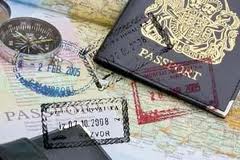
New Delhi, May 6: Taking India's Tourist Visa on Arrival (TVoA) policy to a new level, the ministry of external affairs (MEA) has approved the facility for residents of France, Germany and Russia. Now, TVoA is given to residents of only 11 countries, of which only two - Finland and Luxembourg - are in Europe.
New Zealand is the only other non-Asian country to enjoy the facility. Confirming the development to TOI, MEA sources said the decision will help the government meet its objective to double the international tourist footfall in the next three-four years. This is the first time India's TVoA policy will cover P5 countries in the form of France and Russia.
"After the go-ahead from MEA, the proposal has been sent to the Union home ministry as the final TVoA clearing authority is its Bureau of Immigration but that is a mere formality," said a source, adding that there was a consensus among all ministries involved in extending the policy to these three countries.
"The criteria for providing the facility to any country include security implication - how much is the presence in that country of people inimical to India's interests - and tourist inflow from there. These three major countries made the cut but 6 other nations too will soon get the approval," added the source.
The names of these countries are not yet confirmed, but these may include Spain and Malta. There still, however, seems no consensus within the government on including the names of some central Asian countries in the list. "In this regard, names of countries like Kazakhstan and Ukraine are being discussed positively, but they may have to wait for a while," said an official.
TOI had reported in January that the TVoA could be extended to include 13 other countries, including France, Germany and Russia, after a review of the policy by the PMO in which it was decided that security concerns should not necessarily hamper the extension of the policy.
The government is also not looking at mutual reciprocity in extending the policy as France, Germany and Russia don't offer VoA to Indians. As an official said, the main idea is to attract international tourist traffic and turn India into a major tourist destination.
India currently issues VoA to 11 countries like Japan, Indonesia, the Philippines, Cambodia, Laos, Vietnam, Singapore, Myanmar, Finland, Luxembourg and New Zealand.





Comments
Add new comment